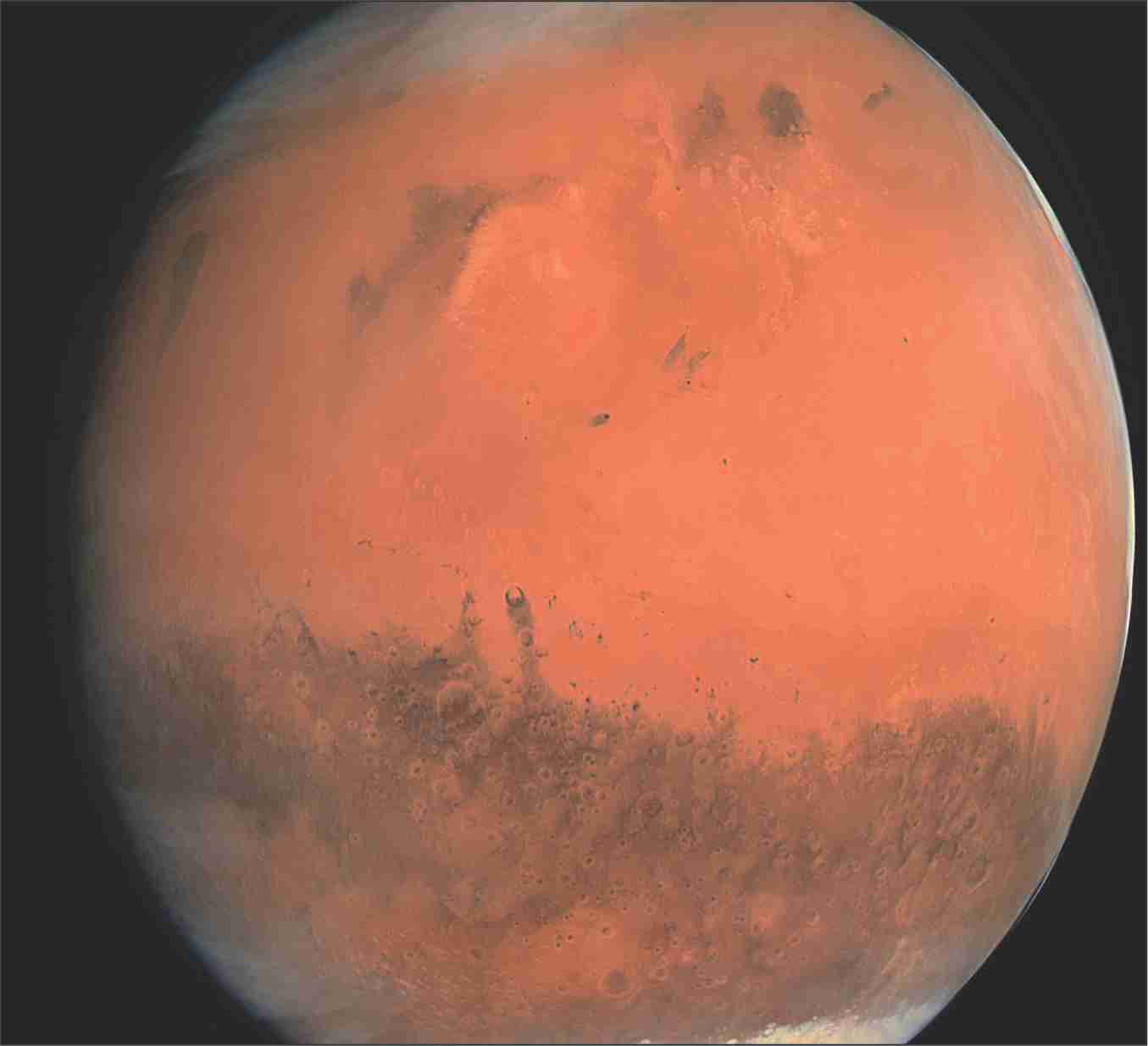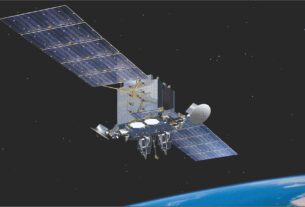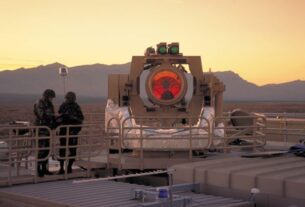Mars, popularly known as Red Planet, has fascinated man for centuries. Not surprisingly then with the ushering in of the space age heralded by the launch of Soviet Sputnik way back in 1957, Mars made a mark as the most explored planet through orbiting and landing space probes.
Because Mars shares many similarities with the earth in terms of some of the features including solid surface, their season and their polar ice caps along with the fact that water exists on Mars, this planet became a focus of intense exploration and study.
Yet another reason for the growing interest in Mars is the hope that in the distant future Mars could be the next outpost for the sustenance of human civilization beyond the spaceship earth. Indeed, former Indian President and well known space and defence scientist, Dr APJ Abdul Kalam, had sometime back made an impassioned plea for a well organised international collaboration to give a practical shape to the human dream of colonizing Mars. But then man is still a long way off from sending a human expedition to Mars.
India’s efforts
Against this backdrop, India too has joined the advanced space faring nations in the exploration of the Red Planet through an orbiter probe. Mangalyaan, the Indian Mars Orbiter Mission (MOM), which was successfully launched into a near earth orbit, by means of an augmented version of the four stage, reliable space workhorse PSLV (Polar Satellite Launch Vehicle) in November 2013, is now on a long cruise to reach its final destination in the orbit around Mars.
The 1340 kg Indian Mars mission moved out of the influence of earth’s gravity in early December last, thereby marking the end of the first phase of the long and exciting journey of the probe. The successful completion of this phase marked a milestone in the 300-days long journey of the Indian Mars probe that would cover a distance of 400-million kms.
Putting the Indian Mars probe in its so called heliocentric phase as a prelude to its moving into the Mars orbit with a perigee of 370-km and an apogee of 80,000-km Mars was a challenging exercise.
Even a small mistake or a wrong step during this phase would have led to the doom of the Mars spacecraft. The Indian Mars probe expected to reach its final destination in the orbit around Mars on Sept 24, 2014 will be subjected to periodic maintenance exercises along with a few minor corrections.
Here again, Indian Space Research Organisation (ISRO) should exercise caution while carrying out the exercise so that the spacecraft should be fit enough to reach its final destination.
On another front, Indian Mars probe, which is now through its longest part of the mission, will have to account for the influence of other planets as well as intense solar radiation.
All said and done, the success of the Indian Mars mission will depend on its flawless entry into the influence of Maritan gravity. This is the most critical phase that determines the success or the failure of a Mars probe.
For many Mars probe had met their doom during this phase. According to ISRO, the spacecraft will be reoriented in such a way that minimum energy will be used to put it into its designated orbit around the Red Planet.
As it is, the Indian Mars Orbiter was pushed out of the earth’s orbit after its on-board engine was fired for duration of 22 minutes. The Indian Mars spacecraft carried around 850 kg of fuel. Incidentally around 198 kg of fuel has been exhausted for firing and activating the on-board 440-Newton engine.I SRO Chairman K Radhakirshnan described the exit of the Indian Mars Orbiter spacecraft from earth’s orbit as the second most challenging operation.
Ensuring management
Perhaps the complexity of the space communications involved in the nuances of its operations is the most challenging part of managing a Mars probe. As it is, the abrupt loss of communications due to a variety of factors has been a major causative factor for the loss of many Mars spacecraft missions. It takes 20 minutes for a command from the ground station to reach the spacecraft and it will take another 20 minutes to receive the data from the Mars spacecraft.
Similarly, even a minor flaw in the on-board propulsion system of a Maritan spacecraft, which is vital for carrying out periodic manoeuvres and orbit correction exercise, could prove fatal for the probe.
According to M Annadurai, Programme Director, Indian Remote Sensing Satellites (IRS) and Small Satellite Systems (SSS), if at any stage the 440-Newton engine on-board Indian Mars probe fails to perform, it will be sensed by the on-board accelerometer. At this stage, additional thrusters on-board will get activated and the spacecraft will acquire the minimum velocity needed to enter the Martian orbit. “ If we do not do that, we will not get into the Martian orbit. The orbiter will vanish into space. These are the basic lessons we have learnt from other missions. So the autonomy of spacecraft is a must,” points out Annadurai.
More importantly, the Indian Maritan spacecraft was also required to be insulated against the solar radiation during its journey in near earth orbit. Here the thermal environment is two to three times hotter than near Mars for the simple reason that the earth is closer to the sun than Mars. On the other hand, in the Martian orbit, the level of solar radiance experienced by the probe is comparatively milder. As such the power generation mechanism of the solar panels of the Orbiter should be designed by taking into account these conditions.
There is certainly no denying the point that there are many trouble spots in the deep space through which a Mars probes cruises to its final destination. Evidently, it is for the first time that an Indian space mission has left the earth’s sphere of influence to undertake a travel of 400-million kms to reach its destination. Indian Mars orbiter takes a route round the sun and as such its trek to the Mars is described as heliocentric.
Mission failures
Clearly and apparently, between the Red Planet and our earth there is what is called “Great Galactic Ghoul” where a number of “factors and forces” could easily put off a Mars probe. Incidentally, the first Mars probed called Marsnik-1 that the erstwhile Soviet Union had launched in 1960 had come a cropper. On their part, planetary scientists say that the real reason for the failure of Mars probe is the complexity of the mission. So far only USA, Russia and Europe have successfully launched missions to Red Planet.
The most recent striking failure of a mission to Mars was the Russian Phobos Grunt sample return mission to the Martian moon that was launched in November 2011. Piggy-riding this mission was the Chinese probe called Yinghou-1. The probe fell back to earth in mid January 2012.Though initially flaws in the main engine was blamed for this failure, subsequent analysis by the Russian space agency Roscosmos led it to believe that a computer malfunction caused by the cosmic rays was the major culprit behind the doom of Phobos Grunt.
USA too has logged failures in its Mars missions. For instance, while the Mars Climate Orbiter was lost in space, the Mars Polar Lander came a cropper while trying to land on the Maritan surface. Mars Climate Orbiter launched in late 1998 went out of operation after contact with it was lost following a disruption in communications. Similarly, the Mars Polar Lander mission launched in early 1999 came a cropper, once again following the loss of communications.
Incidentally, just 21 of the 51 missions launched to Mars have been an unqualified success. It is not for nothing that the ISRO team involved in designing and developing the Mars orbiter had carefully studied the successes and failures of the US, Russia and ESA (European Space Agency) missions and their mission profiles.
According to S Arunan, Project Director of the Indian Mars mission “We compiled the data of the failed scenario of all the erstwhile launches of the US, Russia and ESA. These failures have been reported well by the Failure Analysis Committees (FAC). We went through these FAC reports so that we do not make the same mistakes in our mission. “
Many of the probes aimed at Mars were doomed on account of the failure of the launch vehicles. Similarly malfunctioning components and systems onboard the Mars spacecraft too have contributed to the failure of Mars missions. Of course, these two causes are also common to the failure of other space missions.
For instance, the on-board propulsion system of the Japanese Mars Nozomi spacecraft malfunctioned and then the powerful solar flares seriously damaged its key components. The probe ended up shooting past Mars, instead of going around into the orbit of Mars. The Nozomi Mars probe was launched in 1998 with an initial plan to go into orbit around the Red Planet by the summer of 1999.
Against the backdrop of the failure of both China and Japan to successfully accomplish their missions to the Red Planet, the flawless completion of the mission by Mangalyaan would make India the front runner in the race to Mars.
Because engineering inter-planetary journeys is very complicated, the exploration of Mars has experienced a high failure rate, especially in earlier attempts. A large number of spacecraft targeted for studying and exploring Mars failed before completing their missions.
Elevated radiation from solar flare in deep space-about which one can do very little-could damage spacecraft electronics as well as a hit from a micrometeorite could fully or partially impair the mission to Mars.
More importantly, there should not be any error while entering the Martian gravitational field. Indeed, the big challenge ahead of India would be the successful insertion of Mangalyaan probe into the precise orbit around Mars. Precision calculations are a must for the slingshot meant to propel the probe around the orbit of Mars.
Significantly, a study by the Curiosity Mars Rover launched by National Aeronautics and Space Administration (NASA) in Nov 2011 reveals that the risk of radiation exposure in deep space need not be a show stopper for a long term human expedition to the Red Planet. Curiosity had established a landmark in the exploration of Mars by successfully landing on the Gale Crater of Mars in August 2012.





